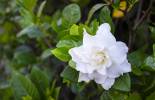Memorial trees pay homage to relatives
Q: I would like to recognize several events in my family’s life, such as the recent passing of my 92-year-old dad. He took care of a weeping willow tree that he was particularly fond of, but I can’t grow it in my landscape.
Do you have some suggestions on how to do a memorial tree?
A: I have many suggestions for you. Practically every institution is short of money, especially for such extravagant items as landscaping. Almost every family member has attended grade school on up to college, and every one of them would love to have a tree planted in honor of a graduate. Any work places, churches, hospitals, nursing homes or other special places family members have lived or worked would love more trees.
Some larger institutions will have specific choices of trees that they would prefer. Obviously, a tree with thorns wouldn’t be great at a grade school. Higher-maintenance trees, like the weeping willow, will be a problem at a school with only a custodian to take care of it. A golf course or cemetery that has a large location for such a big tree as well as a full-time staff of groundskeepers would be a better choice.
Most park districts have plenty of room for more trees and may even have a memorial grove of some kind. If your father was a veteran, maybe a veteran’s memorial would need more landscaping.
I have heard of a small group of men, who met in a marriage counseling group, that planted a tree for every year of marriage for all their marriages. They surprised their wives with a whole grove of trees in a city park.
Another possibility is to plant a tree that is in itself historic or famous. American Forests (www.americanfor-ests.org) is the nation’s oldest nonprofit conservation group. Their historic trees program (www.historictrees.org) brings history alive by propagating and selling the offspring of trees connected to famous people, events and places. From George Washington to Johnny Appleseed, Walt Disney to Ray Charles, these trees witnessed the birth of our nation and all aspects of its history thus far. Because the planting of a tree is an investment in the future, the Famous & Historic Trees program offers a unique way to connect both our past and our future.
American Forests has tree planting programs helping California wildfire areas, Katrina damage, Monarch butterfly forests and projects in conjunction with IKEA and other companies. In addition to many conservation projects, they maintain the official listing of the largest-known specimen of each of the 822 tree species in the United States.
Q: We have a honeylocust tree that was planted in April 2006. Our tree is about 3 inches in diameter and about 12 feet tall. Last summer and again this summer the tree has been running sap — not just a little, but quite a lot. We tried to get our landscaper to replace the tree last fall; however, he refused. He said that all locust trees run sap. We have had locust trees at our previous addresses and we never saw sap running down the tree.
The tree had several dead branches this spring. We cut out the dead, and then deep watered and fertilized the tree. We have done everything we know to do. The tree definitely looks distressed; its leaves are turning yellow. Since the landscaper would not replace the tree and we have now had the tree for approximately 19 months, we must either try to revive the tree or have it taken out and absorb our monetary loss.
Do you have any recommendations on what we should do? Is it inevitable that this tree is going to die?
We are upset with our landscaper and will have no further dealings with him.
A: I am sorry to hear about your tree and the attitude of your landscaper. He probably realized how much money he was going to lose if the tree had to be replaced. Not knowing enough about tree care, he hoped it would take care of itself. Some trees do survive enough that the homeowners don’t pursue the landscaper for a replacement. And sometimes the homeowner gives up on getting any resolution from the landscaper. In either case, the landscaper saves his money.
The landscaper doesn’t realize how much potential business and money he loses when a tree doesn’t thrive or survive. Often this is because he is too busy trying to keep his head above water attempting to get new customers.
It is a shame that your landscaper did not replace the tree when it was brought to his attention. He could have had a happy customer giving him more business instead of an unhappy one.
You are right, healthy honeylocust trees do not normally have sap running down the trunk of the tree. A licensed arborist can help diagnose the possible bacterial diseases. Since the tree has had several branches removed, I would suspect that it will continue to die without more care given to treat the disease, if that is even possible.
Have the tree independently assessed and then give the landscaper one last chance to replace it. Then if not satisfied, call the better business bureau.
E-mail questions to Jeff Rugg at info@greenerview.com.


















